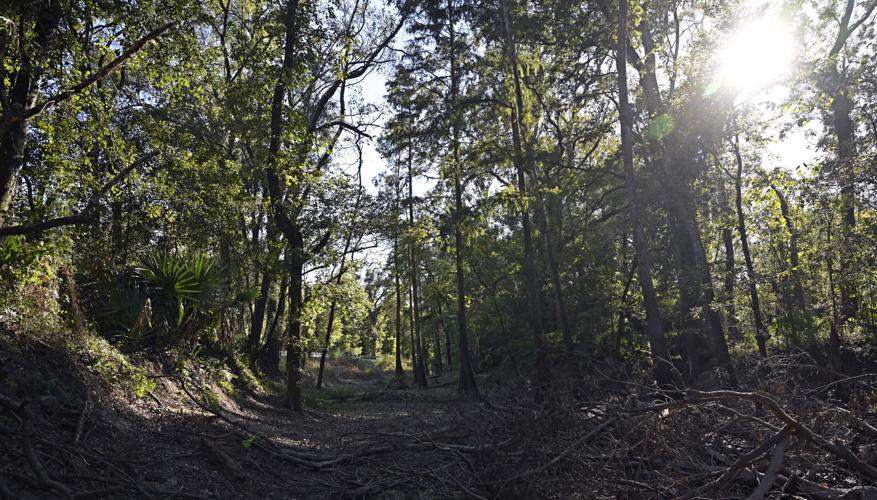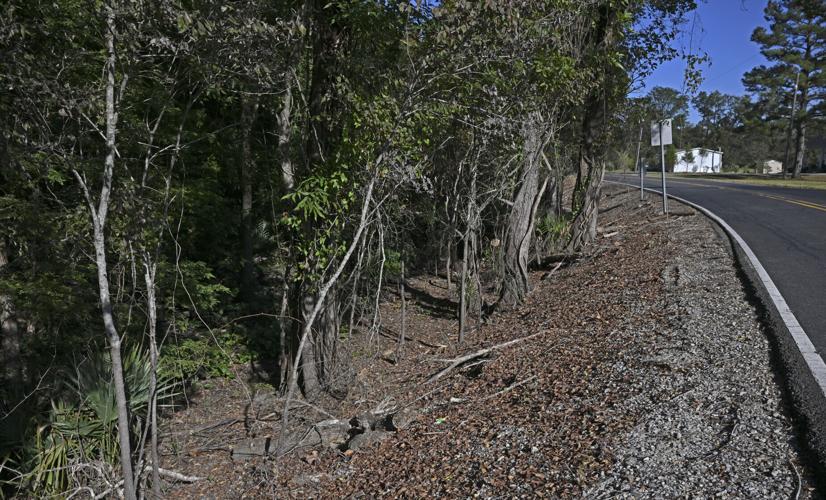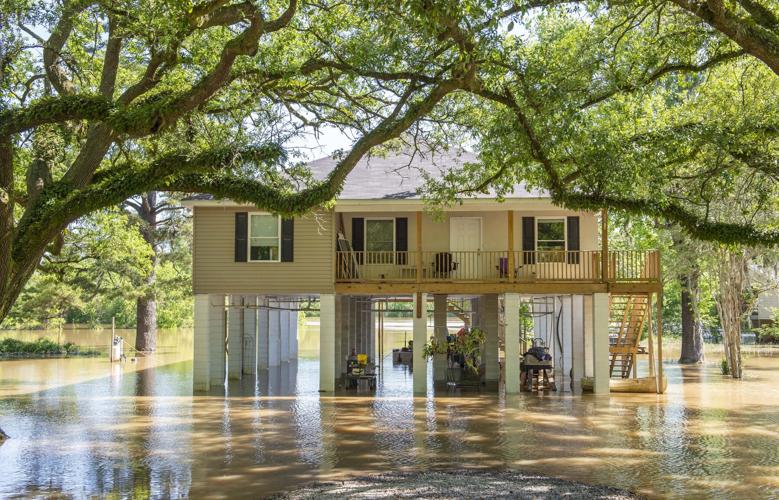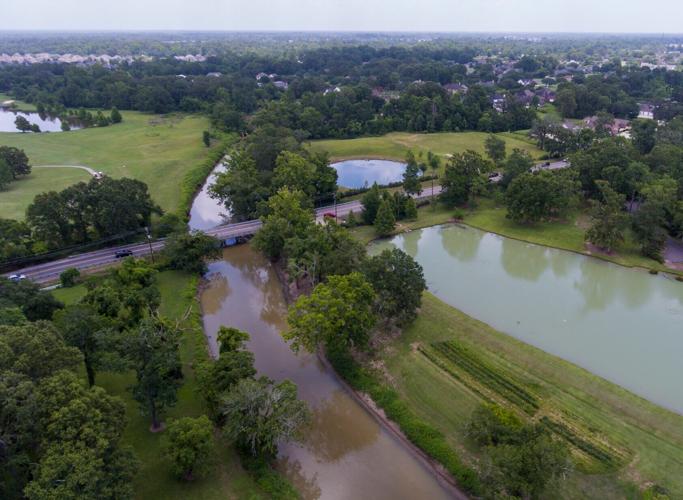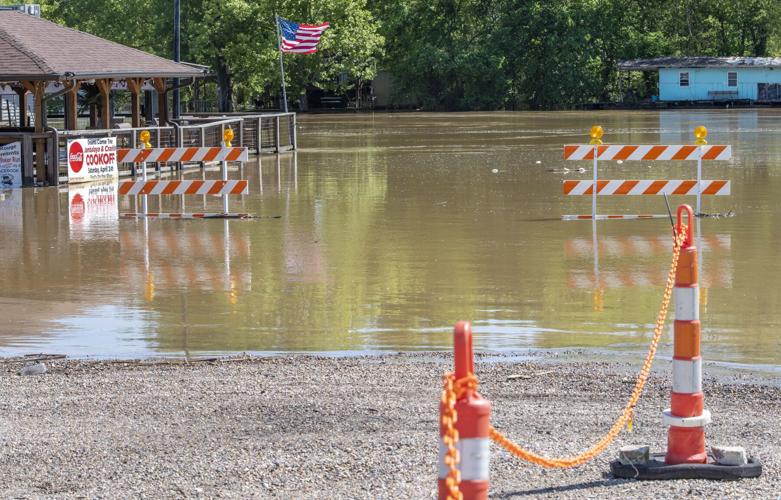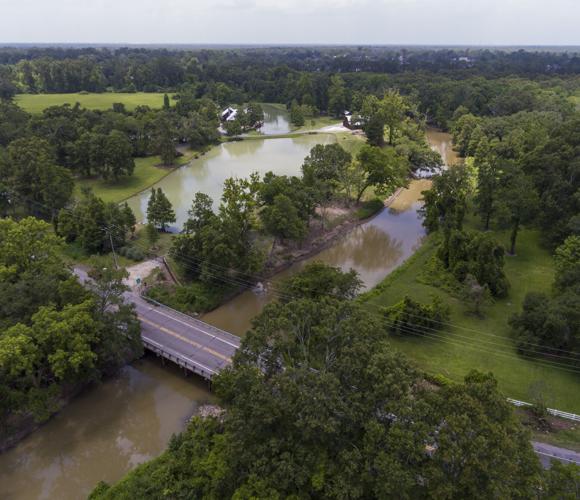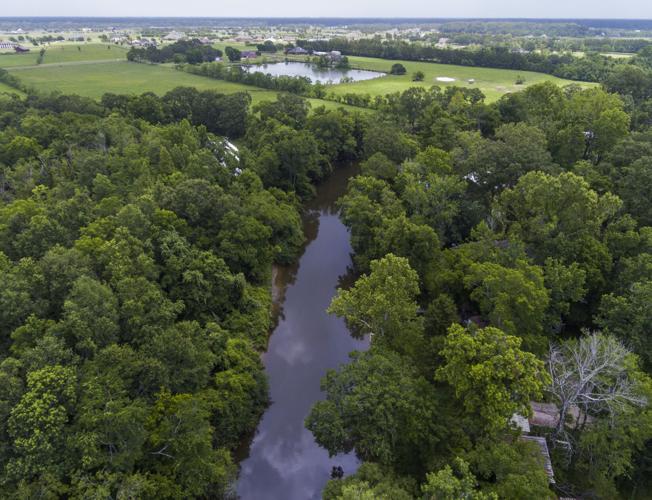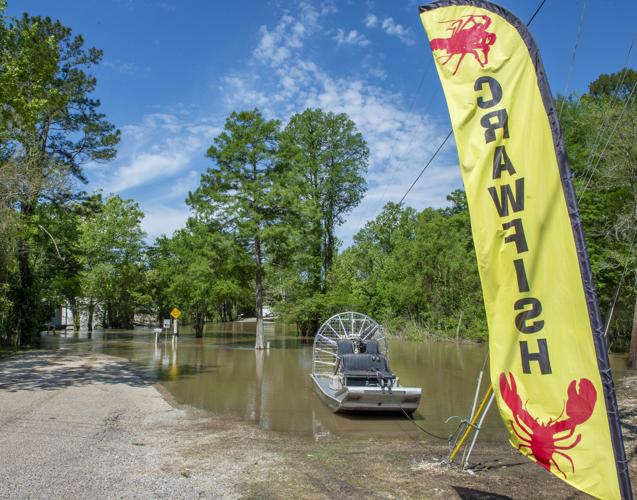When the rain starts to pour, the Baton Rouge area watches Bayou Manchac nervously.
Floodwater in Manchac comes pouring in from Bayou Fountain and Ward Creek; it has overflowed into Spanish Lake, swamping homes; and it has caused an inter-parish standoff when Iberville leaders placed Aquadams to rescue homes along Manchac Road.
When too much water comes, the bayou, which separates East Baton Rouge, Ascension and Iberville parishes, can flood, putting homes and businesses for tens thousands of people at risk.
On Tuesday, some local leaders who sit on a regional flood control board proposed a roughly $84 million plan to dig out underwater blockages along the bayou's length, allowing more water to flow more freely in heavy rains. The Amite River Basin Commission named that and $256 million worth of other projects as their top priorities for state funding in the waning days of Gov. John Bel Edwards' administration.
"We're dependent on Bayou Manchac," said John Clark, an Iberville environmental manager and the commission's chairman.
Two months ago, Chip Kline, a top coastal restoration advisor for Edwards, told the commission to throw "the kitchen sink" at him for new project ideas before the governor's second and final term ends in early January. The governor's Louisiana Watershed Initiative is sitting on hundreds of millions of dollars in unspent funds from the $1.2 billion in federal flood control money Congress provided the state after the 2016 floods.
The recently reconstituted Amite River Basin Commission — which has broad powers to manage the basin that drains the Baton Rouge region east of the Mississippi River — took Kline's advice to heart. The group developed a list of at least $1.2 billion in projects from the parish government and levee district officials who sit on the commission.
How Manchac clearing could help
The commission includes representatives from each of the parishes in the Amite basin. While its members created the list of top projects, they did not specify which should be the top priority — and it's not clear how much the state has available for the commission's wish list.
However, the Manchac job was the top priority for two parishes, Iberville and East Baton Rouge, and was Ascension's No. 2 priority.
The idea isn't to entirely dredge the bayou, but to remove blockages and restore the natural bottom, commissioners said.
The project would also study the Old Perkins Road bridge near Santa Maria Golf Course, which sometimes restricts the flow of water, and clear out silt in the western bayou in Iberville and East Baton Rouge parishes.
The work would also reorient how Ward Creek empties into Manchac. The mouth of the creek, which Clark suggested drained three-quarters of Baton Rouge, is cocked so that it dumps into Manchac against its downstream flow.
Other ideas
Some other parishes that would benefit from the Manchac project — and may even face problems because of it — say other efforts should take priority if there isn't enough money to do all of them.
Mark Harrell, Livingston Parish's representative on the panel, said the prospect of more water is why his parish made its No. 1 proposal a $100 million project to do roughly the same kind of selected channel-bottom digging on the Amite River. The work would extend from Port Vincent to the river's mouth at Lake Maurepas.
"Please understand that Bayou Manchac is a good project. I do support it; however, you're dumping water on us," said Harrell, a Livingston Parish executive director, "so help us help the other parishes. We'll take the extra water but give us a way to get it on out to the lake."
In a 2019 study for the state highway department, Dewberry Engineers concluded that 34-mile digging project would need to remove 8 million cubic yards of sediment from the Amite. When asked on Tuesday how Livingston officials planned to dispose of all that sediment, Harrell said he would have to see what federal and state agencies allowed — it's a potentially costly question — but the parish had several ideas.
It's not clear how big of a disposal effort the Manchac project would require.
Ascension Parish President Clint Cointment, who earlier this month told his Parish Council members about the basin commission's likely backing of the Manchac dredging work, didn't give that project his parish's top nod.
Instead, Ascension's priority was Cointment's roughly $104 million plan to build a pump station and control structure that would divert high water in Spanish Lake and Bluff Swamp to the Mississippi River via New River.
The new pump at the Mississippi and the control structure at La. 74 in Dutchtown would reverse the flow of New River and send it to the Mississippi to drain the bowl-shaped swamp region in times of high water.
Cointment said the project would prevent flood water from having to flow down Manchac and the Amite in the first place.
"At any given time that this is utilized, it has benefit from a regional standpoint," Cointment said.
The proposed projects also include a $27 million clearing and snagging proposal for the upper Comite River and its tributaries in East Feliciana Parish and a $25 million levee and pump system in St. James Parish.
The commission proposed analyzing whether old sand and gravel pits along the upper Amite, mostly north of Watson, could be used for stormwater detention areas. Several of the lesser priority projects were also for stormwater detention areas.

